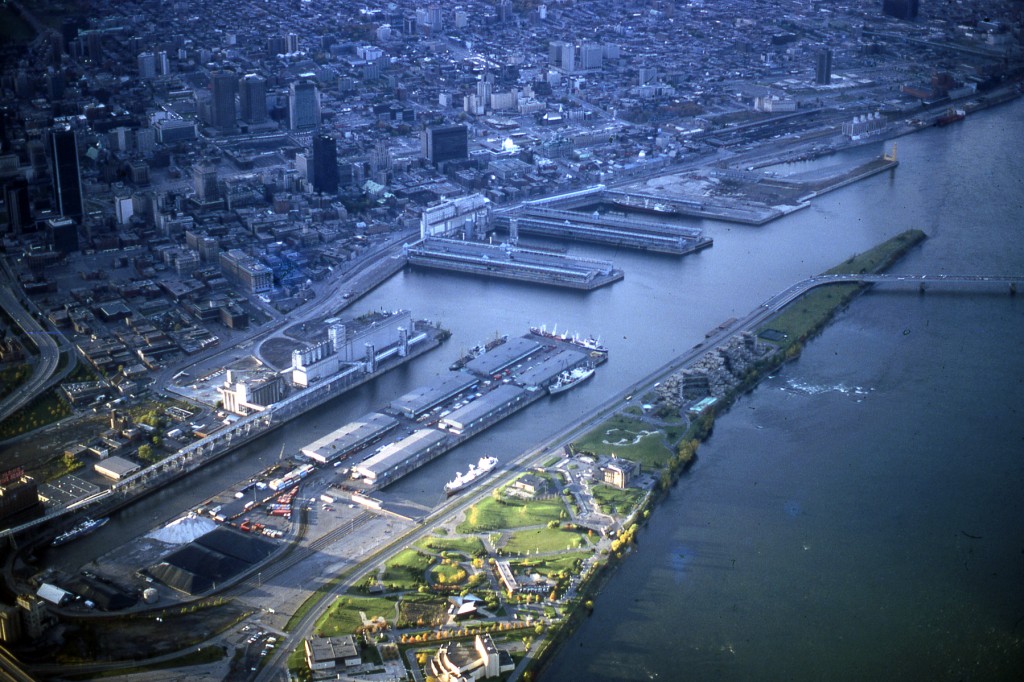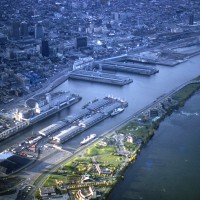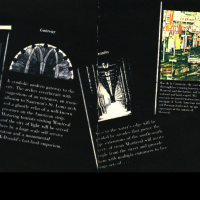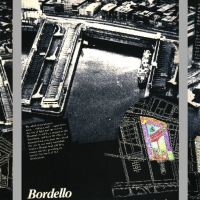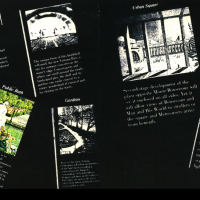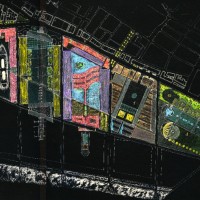Montreal Water Front
The future of the city of light is extended out onto the harbor water. Existing city streets turn into canals for pedestrians and cars which combine with buildings to form their banks and enclose watery piazzas. These new public spaces on the water will become an integral part of the city fabric.
The city of light will become a city of the night
This emphasis, glitter, and entertainment is deliberate. We are seeking to reinforce Montreal’s place as a center of culture and entertainment for Canada.
At the heart of our scheme for the city of light are four basic elements.
- The retention and adaptive re-use of all major structures in the site area. This includes the piers and the major granaries. We envision the large white granary currently slated for demolition as turning into the showpiece of our first phase of development. We propose its re-use as a major hotel casino complex with 7 levels of interior parking (2500 cars).
- The expansion of the matrix of street bridges onto the water to create a series of large “water” blocks bounded by the street bridges. Each block shall take on its own character and particular use. The bridge/streets will contain the city supplied infrastructure and serve as the base for private building.
- The retention of water as a design element: in places free-flowing river, in other places purified and controlled recreational water, but always present. These watery piazzas become the theme of the development, creating a city on water, a Venice-in-reverse.
- Recognizing that of necessity Montreal has become a city of the winter and of nights activities, we propose using modern technology to build upon this existing tradition to augment the theme of city on water with city of the night. To accomplish this we propose the designation of the separate blocks to use which will generate interest, use excitement and most importantly revenue. Special gambling taxes and license fees on uses such as bordellos, baths and massage parlors will provide support for other less profitable public uses, such as parks and schools, with money left over the city coffers and future phases of development.
